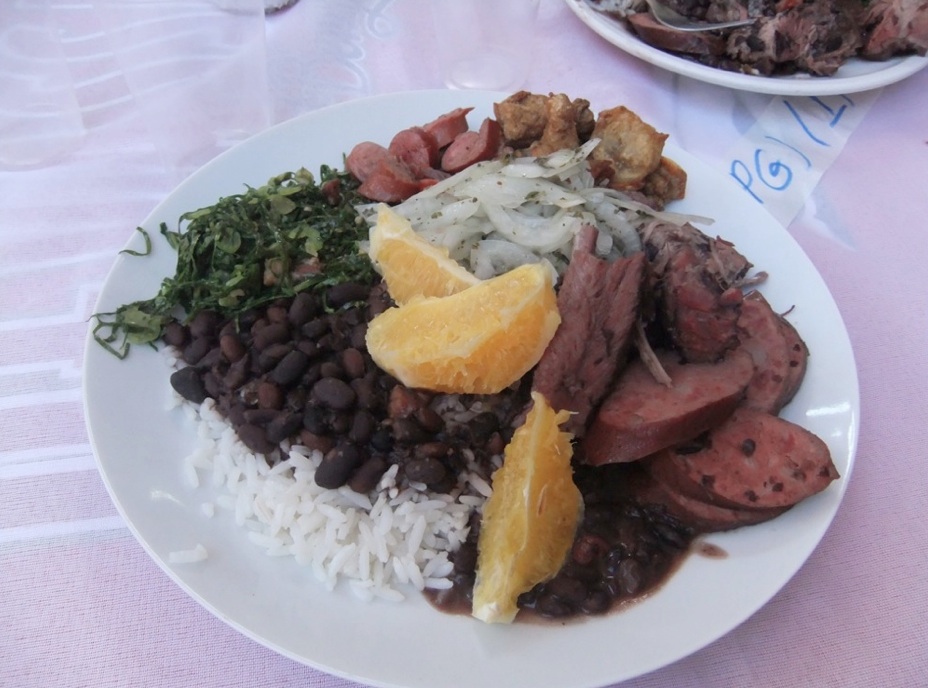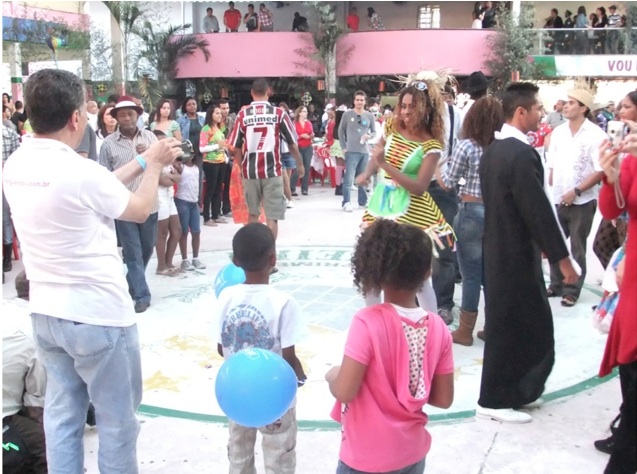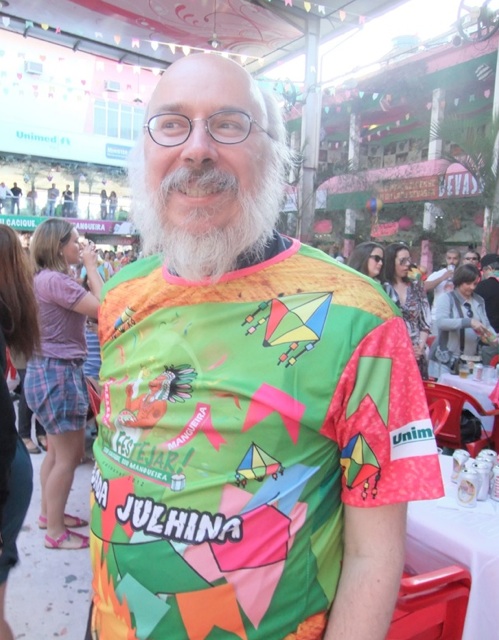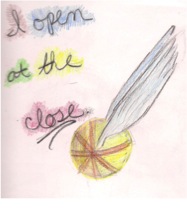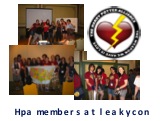How to Earn Your Skeptic "Badge"
/Learning today happens everywhere But it's often difficult to get recognition for skills and achievements gained outside of school. Mozilla's Open Badges project is working to solve that problem, making it easy to issue, earn and display badges across the web. The result: recognizing 21st century skills, unlocking career and educational opportunities, and helping learners everywhere level up in their life and work.
Get recognition for new skills and achievements
The web and other new learning spaces provide exciting ways to gain skills and experience -- from online courses, learning networks and mentorship to peer learning, volunteering and after-school programs. Badges provide a way for learners to get recognition for these skills, and display them to potential employers, schools, colleagues and their community.
Through a simple framework that's open to all
Using Mozilla's Open Badges infrastructure, any organization or community can issue badges backed by their own seal of approval. Learners can then collect badges from different sources and display them across the web -- on their resume, web site, social networking profiles, job sites or just about anywhere. Unlocking new career and learning opportunities. By displaying skills and achievements that traditional degrees and transcripts often leave out, badges can lead to jobs, community recognition, and new learning opportunities. -- from Mozilla Open Badges Wiki
Let me make a few things clear from the start: First, I was an Eagle Scout. Technically, I am an Eagle Scout since what you learn in scouting is something you carry with you for the rest of your life. I not only made Eagle but I had multiple additional palms, which means that I earned a hell (pardon my un-Scout-like language) of a lot of merit badges through the years.
I certainly valued the learning which went into each of those badges, but I also took pride and joy in that full sash of merit badges, in and of themselves, and I was motivated to see how high a rank I could earn before I aged out of the organization.
Scouting does several things right where badges were concerned: there are some badges which every Scout is expected to earn if they want to move up rank but there are also a vast array of different badges which a scout chooses from as they map their own route through scouting. The badges I remember most vividly were those having to do with journalism, communications, drama, and photography, all aspects of the person whom I would become when I grew up. The skills which the badges represented were in most cases skills which we actively deployed in our life in Scouts, so they were not simply things which I learned to earn a badge. Well, there were a few of those -- in my troop, Basket Weaving was the joke badge we all earned at summer camp because the requirements were simple and pretty lame and it was funny to have the badge on your sash. We can say that Scouting thus combines intrinsic and extrinsic motivations to create a system within which the badges are meaningful to those who opt to participate.
That said, even as a lad, I knew that Scouting and its badges were not for everyone. Many of my friends, especially during the late Vietnam War era, did not like the idea of wearing a uniform of any kind, they did not really understand the appeal of badges, they did not want adults telling them what to do. (Today, I might add my own increased questioning of the values of the organization, which has today embraced overt homophobia in its dealing with queer scouts and scoutmasters.)
For the most part, the current drive for badges in education is being pushed by people like me -- people who were proud to wear merit badges, get good grades, or otherwise, display their achievements. The problem is that badges are being designed for people who may or may not share those values and assumptions.
Second, I believe fully and totally in the value of informal learning, seeing much that youth learn outside of school as more essential to who they are and who they become than the more narrowly restricted curriculum imposed by the national standards. I was always someone who learned more outside the classroom than inside, even if I played the game of school well enough to progress to a high place in the system. Scouting was part of that and so I was glad it had such a flexible framework. But, many of the things I did outside school -- like watch and develop a knowledge of 1930s monster movies, which, ultimately, led me to get graduate degrees in cinema studies -- were not something anyone every gave me a badge for. I see the importance of recognizing, respecting, supporting, and deploying the expertise developed through informal learning and fear that when schools seek to close it out of their formal practices, they also shut what is learned in school for what kids do with the rest of their waking hours.
I fully support the ideas about "connected learning" which were announced by the MacArthur Foundation at the recent Digital Media and Learning Conference. Something very important occurs when we develop a more integrated learning ecology and when kids know how to map what they learn outside of school into categories that they can meaningfully deploy inside the system. That's part of the power of Scouting -- to convert the activities into badges into ranks which can be read and appreciated as accomplishments by adult authorities, including those who decide whether we get jobs or can move through the system of higher education.
That said, I remain deeply skeptical of the massive push going on right now to promote the use of badges across a broad array of different informal learning contexts. I am writing this as I wait in the airport on my return from the DML conference, and what I heard there was a push for badges as if they were a one-size-fits-all-solution to a range of ills in the current educational system (at least from the podium) and then a lot of people on the fringes of the party asking each other whether we really believe that badges are uniformly the way to go. Many of us fear that MacArthur, Mozilla and other foundations have jumped too quickly on the badges bandwagon. I was happy to support badges as one interesting model for thinking about how to insure greater respect for the value of informal learning; I am less prepared to accept the premise that badges might someday be the universal currency by which young people get credit for (or in some models get motivated to participate in) a range of informal learning activities.
As someone who helped to build up the current field of Digital Media and Learning, I am concerned that, if badges start to feel too much like a "party line," many are going to feel excluded from the field. This has the potential to be the first major divide in a field which many of us see as our intellectual and spiritual home. We remain silent because we do not want to disrupt the party and because we respect the leadership of the DML initiative so much, but there is much that is at risk in that silence.
So, let me spell out some of the reasons why I want to see us go slower and think through the advantages and disadvantages of badges:
1. Many young people have deep ambivalences about the kinds of "credit" adults choose to give (or withhold) around their activities. There are plenty of smart kids who don't say things in class, may not do as well as they can on assignments, and certainly would not join an organization like scouting because these kinds of achievements are not "cool" within their peer cultures. Many of these kids are learning now outside of school through participating in activities that are intellectually demanding and socially rewarding without bearing the imprint of adult approval. Some of these activities even have an air about them of transgression or subversion which make them safe for their participation. So, what happens when the scoutmasters move into these spaces and start giving out merit badges, gold stars, cookies, whatever they do, to single out those kids they think are doing what the system wants them to do. Do we not run the risk of chasing away the kids who need these kinds of informal learning the most? Admittedly, there is a value in helping these youth find ways to value what they are doing as intellectual pursuits and there is a value in seeking to validate these experiences and help them learn how to mobilize that knowledge as they learn to work through the formal structures that exert power over their lives. Much of that value may come in helping them articulate for themselves what they are getting out of these kinds of experiences. But, making the badges too central to the process may alienate them before they have a chance to exert ownership over the knowledge they are acquiring. (This problem only grows when we seek to move the system of badges from its original American context into a global phenomenon, since badges will mean very different things across a range of different cultural contexts.)
2. Badges run the risk of becoming "gamification" by another name -- that is, a system which does not trust the power of intrinsic motivation and feels the need to add a layer of extrinsic motivation. Again, scouting, I would argue, succeeds in doing both. James Gee argues that games-based communities do also. But, some forms of gamification rely so heavily on points schemes that there is far less effort to make the activities meaningful in and of themselves, and it can be easy to replace learning with "playing the game." American education is already gamified: for too many students, even good students, it is already about collecting badges and they calculate carefully what they need to do to make the 'A'. I worry that badges can become just another points system and as a consequence, undercuts the motivational structures which have historically led young people to engage in these kind of practices. Otherwise, do we run the risk of turning game modding or fan subbing into the contemporary equivalent of my Basketweaving merit badge -- something kids do because it is an easy way to get recognition or because they think it is a joke. And, as they do so, what happens to those kids who value these activities on their own terms.
3. What's working about the kinds of informal learning which takes place in participatory culture is that it is emergent and ad hoc: activities spring up, last as long as they interest participants, disappear again; young people feel empowered to create their own activities and set their own goals within these organizations; young people can feel like the experts in a subject matter which has not yet been fully integrated into the systems of formal learning. Not every child participates in such activities, and our goal should be to expand the range of options available and to provide stronger motivations and scaffording for their participation. But, informal learning works because it is informal. Yet, any coherent system of badges requires systems and structure; there have to be requirements which help to standardize forms of participation and which rank some kinds of contributions as more valuable or at least more central to the group than others. In that sense, too quick a move towards badges runs the risk of destroying the complex but fragile ecosystem within which participatory learning thrives. Our philosophy should be above all do no harm. There is a high potential of harm in a badging system which is badly applied.
4. Another thing that's working about these informal learning communities is that they are relatively nonhierarchical. They are often spaces where youth and adults interact without fixed relations of power and authority -- the adults are not parents and not teachers, they are people who share interests with the younger participants, and the mentorship that emerges is organic to the activities in which they are engaged. In some cases, the adults even learn from youth who have developed greater expertise or have more experience. This fluidity of relations across generations is threatened by a system where some people (you can call them Den Mothers or Scout Masters, Teachers or Principals, you can even call them Fearless Leader and Grand Poohbah) are giving badges to others (who are now seen as their subordinates). These roles will not necessarily break down along conventional adult-child lines, but there's a high likelihood of those roles reasserting themselves into the process, especially if the granting of badges becomes more bureaucratic or requires communications with more formal institutions and organizations.
5. Badges may work well in some circumstances or for some participants. They should certainly be explored as one way of validating and supporting informal learning. But, the rush to badges means that we have not spent as much time in the past few years as we should be trying to understand what other mechanisms for promoting participatory learning might be. It means that we are overlooking or over-riding systems of support which already exist in many of these sites of informal learning. So, even if we think badges are a potentially good idea in some contexts (and, again, my first response to this badges talk was generally supportive), we may not think it is the best or only possible solution in every situation.
6, No system of badges is going to be adopted uniformly. Mozilla's description of where learning takes place encompasses mostly forms of learning which schools and employers are likely to already recognize as valuable -- "from online courses, learning networks and mentorship to peer learning, volunteering and after-school programs." Yet, much of the early work in DML focused on informal learning sites which many adults did not yet fully appreciate -- from gaming communities to fandom. If we move to see badges as a common currency of achievement in informal learning, then what happens to those activities which chose, on principle, not to give badges or which lack the formal infrastructure to even decide who should be issuing badges. Do these activities, in fact, become even more marginalized, because they are now neither part of the formal system of schooling or part of the informal system of badging. This is another way that badges potentially disrupts what's working about participatory culture.
I guess what I am saying is:
- Experiment with badges but really experiment -- that is, try to figure out if these mechanisms really do what you hope they will do and be particularly attentive to the ways that they have unintentional consequences and damage the very activities you are seeking to recognize.
- Also seed other kinds of research and experimentation which looks more closely at other mechanisms for promoting and appraising participation, including those which may already be in place within such communities of practice.
- Be aware that the process of badging is going to make things more comfortable to those who are comfortable with getting recognition from adults and may make things less comfortable for those who have not yet fully bought into the values of the current educational system.
- And above all, if you are embracing badges, make sure you are doing so because you agree with the core premises, because it's the right thing to do for your group, and not because someone is offering a bucket of money to those who are willing to "give it a try."





